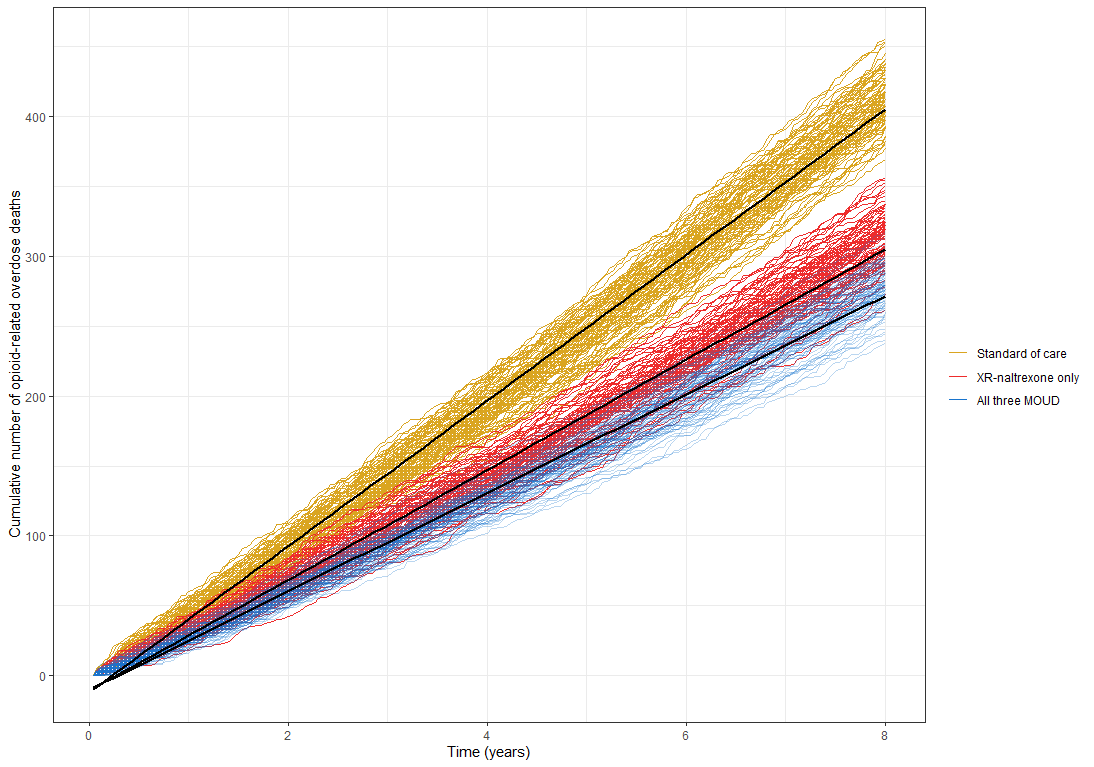PROVIDENCE, R.I. [Brown University] — The epidemic of opioid-related overdose death persists across the United States, and people released from jails and prisons are at particular risk.
While the benefits of life-saving medications for opioid use disorder (MOUD) — such as methadone, buprenorphine and extended-release (XR) naltrexone — has been documented across hospitals and treatment centers, its uptake has been extremely limited in U.S. prisons and jail settings.

The researchers developed a microsimulation model — a computer program that mimics the operation of government programs and demographic processes on individual members of a population — to simulate a population of 55,000 people at risk of opioid-related overdose death in Rhode Island. The primary calibration targets for the model were the observed overdose mortality rates in Rhode Island in 2015. The model proceeds in two-week time-steps; therefore, incarceration was defined as being incarcerated in Rhode Island’s unified prison and jail system for a period of at least two weeks.
They then studied the potential effects of providing access to all three MOUD in a combined prison and jail setting to at-risk people in Rhode Island over eight years and compared that to an XR-naltrexone-only intervention and the standard of care.
In the standard of care scenario, which accounts for limited or no access to MOUD, the model predicted 2,385 opioid-related overdose deaths between 2017 and 2024. An XR-naltrexone intervention averted 103 deaths, for a 4.3% reduction, and access to all three MOUD averted 139 deaths, for a 5.8% reduction. Among those with prior-year incarceration, those numbers rose to 22.8% and 31.6%, respectively.